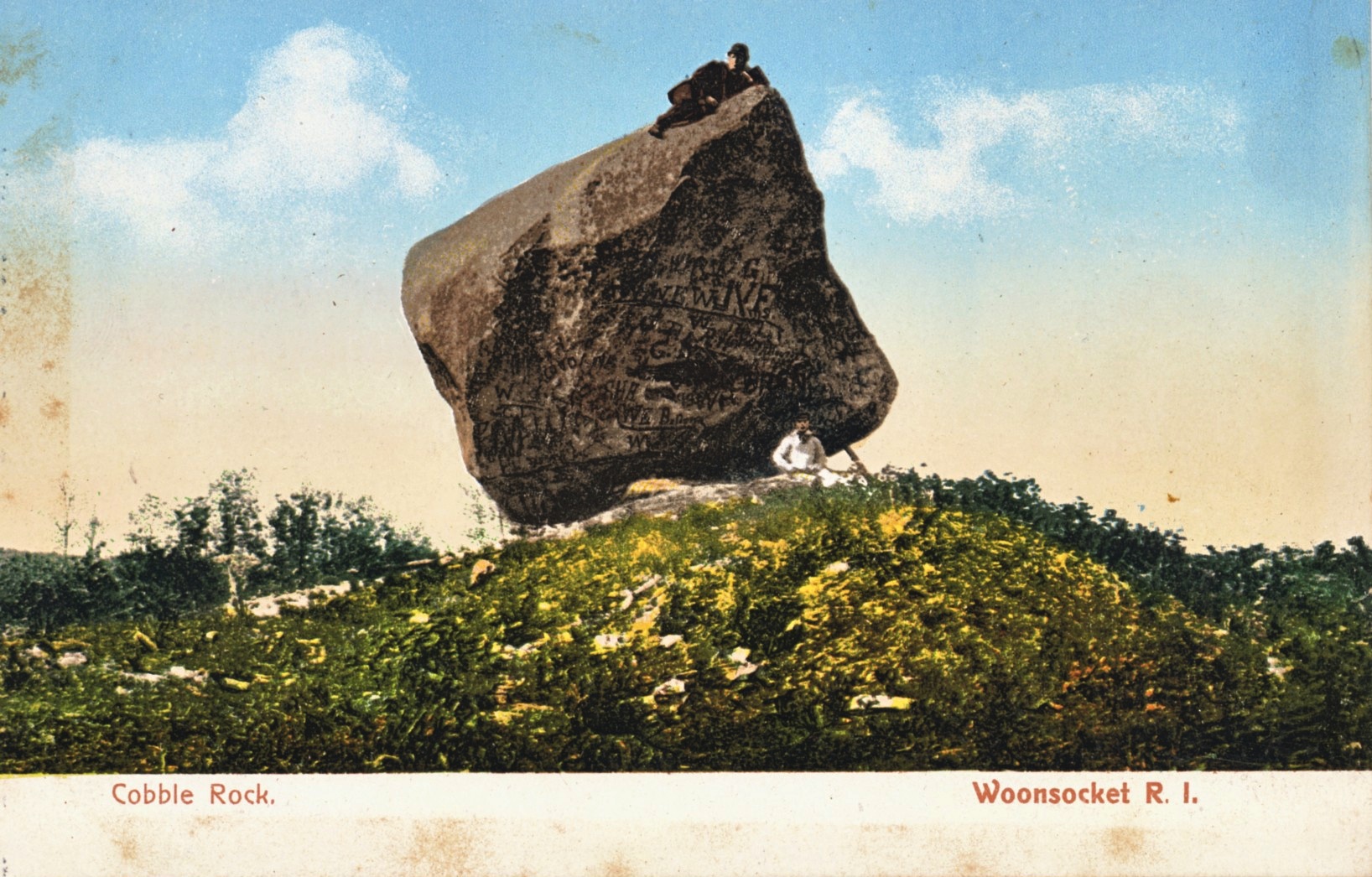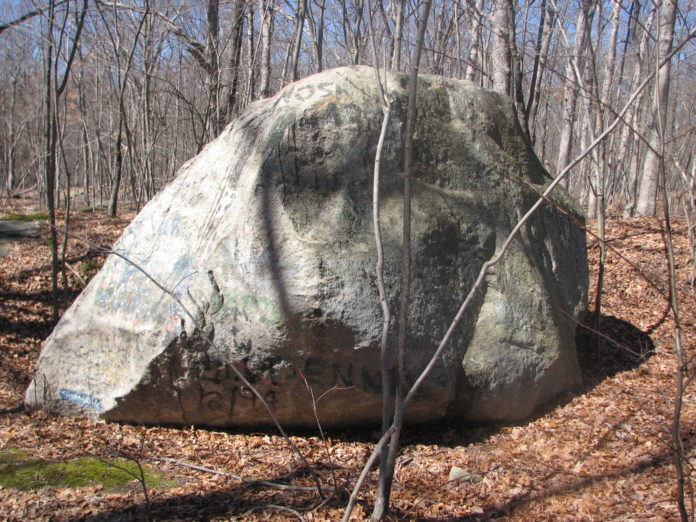NORTH SMITHFIELD – Imagine, many thousands of years ago, animals such as woolly mammoths, giant bears, saber-tooted tigers and giant sloths roamed North America.
Much of the northern United States was covered by glaciers. These glaciers started retreating as the earth’s climate warmed, carving out hills and valleys, creating lakes and rivers, and dragging and depositing sand, rock, and boulders across the landscape that exists today.
Today, hikers at the North Smithfield and Woonsocket border might stumble upon a fascinating and somewhat rare stone, a remnant of eons ago.
Located off Mendon Road, near the St. Antoine campus and down a wooded path, is Cobble Rock. The 200-ton boulder is a particularly impressive specimen from the far-distant past, when the area was covered by a one-mile deep sheet of ice.
It seems when the ice melted, the “glacial erratic,” Cobble Rock landed. It was probably standing in that spot for thousands of years since the last glacier came through, says Christopher Martin, curator of the Quahog.org blog – who stated the rock is a, “granite boulder found sitting on a ledge of quartz.”
The glaciers left behind that boulder, as tall as a two-story house, perched precariously on a small hill. It was a hunk of rock so huge only Superman could move it – yet it eventually shifted.
Apparently, in the 1970s, the rock toppled. It was the nudge of a powerful storm in 1977 that ultimately did it, as the position of the stone was likely already weakened by countless years of weather beating.
Through the years the giant rock has attracted attention, especially in simpler times, said Martin in an interview. A family, a couple, or friends might spend leisure time by the rock, having a picnic or taking photos at Cobble Rock.
It was even the subject of a few postcards in the early 20th century, said Martin, a Rhode Islander originally from New York, who on his blog describes himself as, “looking for places glimpsed in faded photographs or mentioned in obscure books.”

Cobble Rock is not quite as magnificent as it was in the postcard era, but remains a curiosity. The seemingly immovable natural object changed over time, as did daily life in rural North Smithfield, and now it’s changed again, perhaps temporarily.
While hiking into the wilderness and fields is perennially popular, people are getting outdoors more, even in winter. Forced slowdown and shutdowns of life in the 21st year of the twenty first century seem to have motivated a significant segment of society to take to the woods.
For example, in North Smithfield the number of visitors to Audubon Society of Rhode Island properties such as the Florence Sutherland Fort and Richard Knight Fort Nature Refuge has increased, “quite a bit,” says Kim Calcagno, a refuge manager at the Audubon Society of Rhode Island. She cites the pandemic as a major reason for the upswing.

“The Fort,” provides plenty of outdoors with 238 acres, three ponds, and several trails.
ASRI encourages people to explore the great outdoors, even in January. Winter is a fine season, especially when there’s the frozen white stuff or snow shoeing, finding animal tracks, and cross country skiing, says Calcagno.
Another winter activity offered by ASRI is, “owl prowling,” – taking a hike to find and listen for owls. Owls call in the cold weather, said Calcagno, who is married to Martin.

Visitor population to other nature spots is indeed an upward curve.
“Absolutely,” said Kate Pasquariello, program coordinator for Parks and Recreation of North Smithfield, when asked if she’s seen an increase.
She noted that the North Smithfield Heritage Association offers guided tours of town trails.
Last year, North Smithfield, like countless other cities and towns, cancelled some events indoors and outdoors – but the shutdown has a silver lining, said Pasquariello: More people are enjoying nature.
Pasquariello said she hopes to get back to some kind of normal soon and resume activities – both indoor and out.
Meanwhile, luckily, the town has much open space, she said, noting that the project of marking trails in town is in progress.
Fortunately, on those trails, no woolly mammoths, giant bears, saber-tooted tigers, and giant sloths now roam.
Cobble Rock, however, still stands and probably will for many millennia to come.








